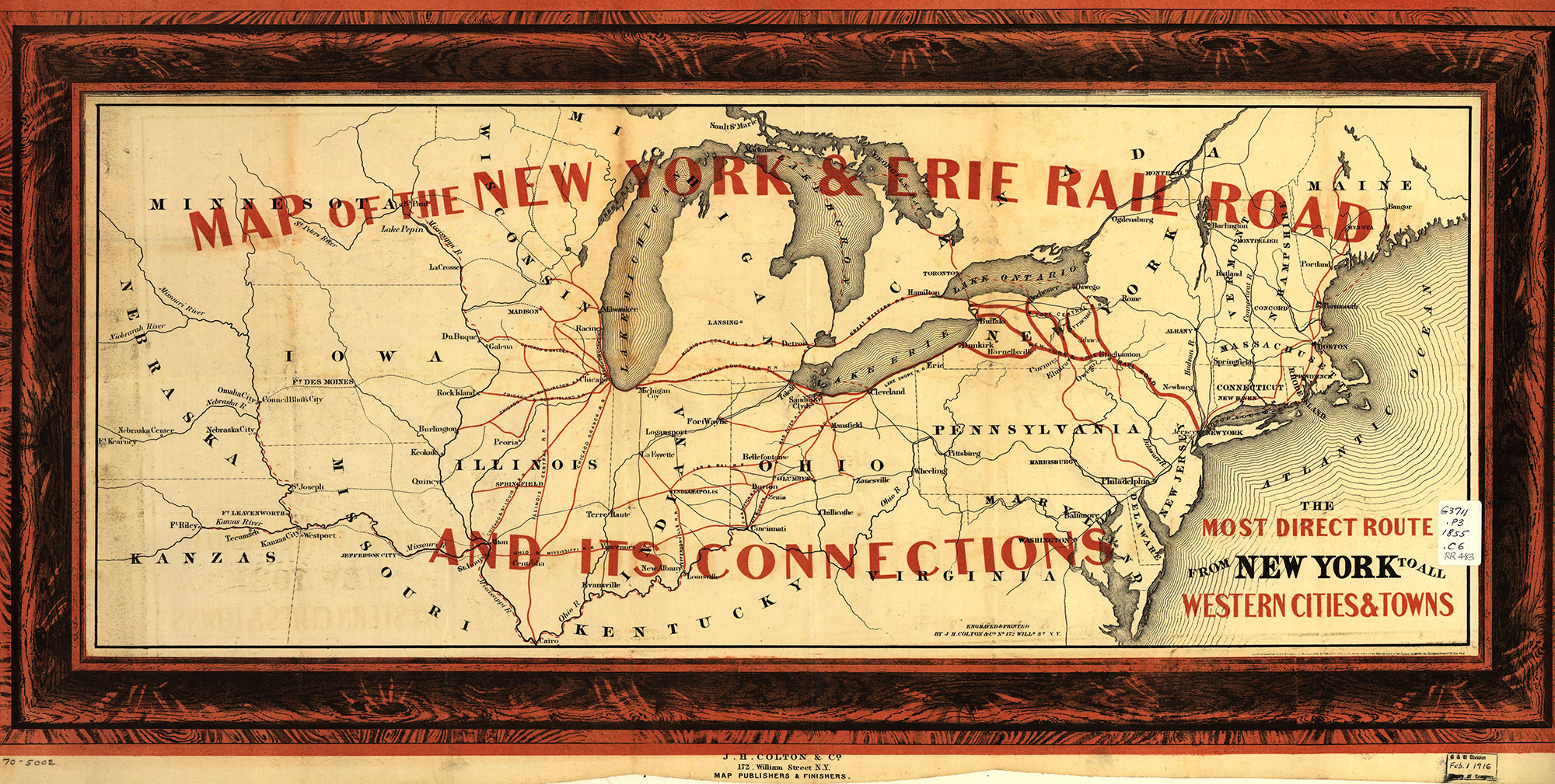The New York & Erie Railroad
The construction of the New York and Erie Railroad (the Erie) brought additional prosperity and growth to a wider area of the Upper Delaware River Valley than the canal had before it — particularly upriver from Lackawaxen where the canal crossed the Delaware River and ascended the Lackawaxen River. It was conceived of as an "iron highway" fro Lake Eire across the Southern Tier counties to the Hudson River in Orange County with the hope that it would allow the southern counties to more successfully compete commercially with the central counties served by the Erie Canal. The Erie was officially organized in July 1833, but it was not completed to Dunkirk until 1851. It became the first long line railroad in the country.
Our Region
In the Upper Delaware region, the railroad reached Port Jervis from Piermont in 1847. Two miles above Port Jervis the railroad crossed into Pennsylvania because the D&H Canal, which occupied the east bank of the river, obtained a permanent injunction that preempted all rights to the bank upon which the canal was built. It recrossed the Delaware into New York above Tusten.
The railroad, which opened a fast and direct connection with New York City, was instrumental in the economic development of the region's resources. It provided both passenger and freight service and shipped agricultural and lumber products from the Upper Delaware River Valley to larger markets. Previously scarce commodities, such as rope, became more accessible via the railroad. The passenger service became an important component of the local economy as the train brought tourists to the vacation spots that developed in the valley. The railroad was also a competitor for the Delaware & Hudson Canal that previously had been the major transportation artery in the area.
The railroad, even more than the canal before it, boosted the local economy and the development of small towns along the railroad.
Callicoon and Port Jervis
Callicoon grew up around one of the railroad depots and became on the the largest communities in the Upper Delaware River Valley with hotels, restaurants, and retail shops that catered to railroad passengers. In 1874, the Erie doubled its track through the region. Irish and Italian immigrants came to the area to work on the construction joining German immigrants already living in and around Callicoon.
Port Jervis also benefited from the railroad shops that were located in the city. The railroad shops handled all of the major repairs on the Delaware Division and a major coal storage facility was built in the town in 1900. By the 1920s and 1930s, the Eire served as a major source of employment in Port Jervis, employing some 2,500 Port Jervis residents. The city served as a division center for the Erie between Jersey City, New Jersey and Susquehanna, Pennsylvania. By 1922, 20 passenger trains a day passed through Port Jervis and the freight trains hauled anthracite coal into the major metropolitan areas. Ironically, the canal's chief engineer, John B. Jervis, was instrumental in bringing the railroad through Port Jervis.


